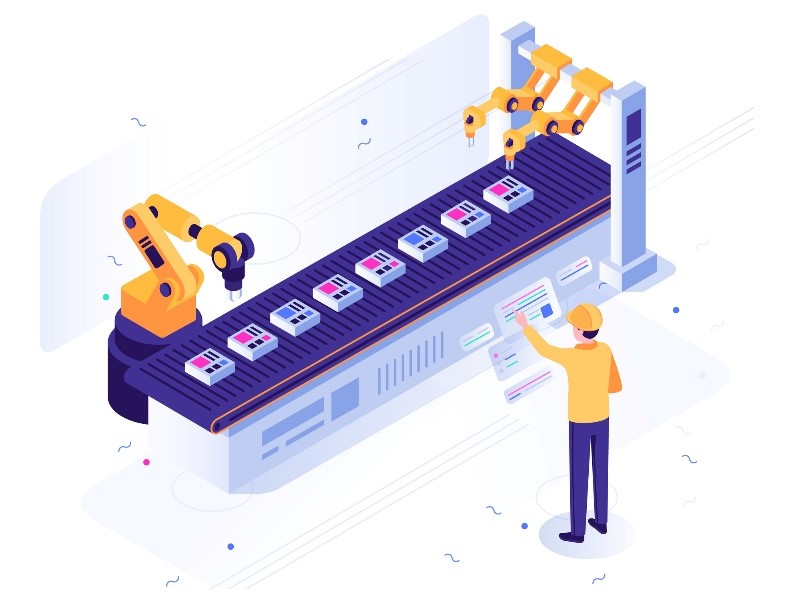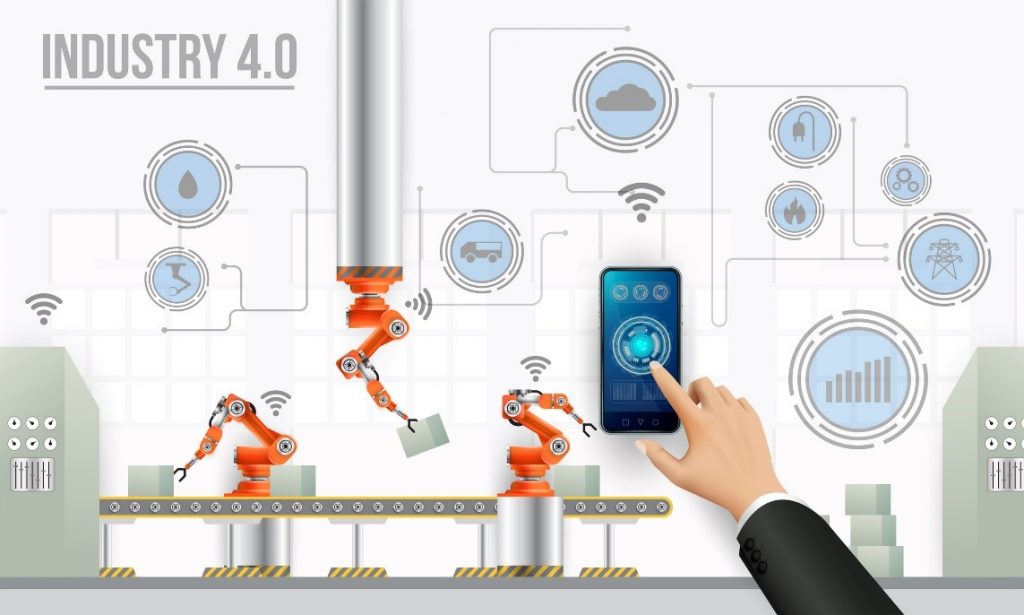Dr Salman Saeidlou, Senior Lecturer in Mechanical/Material Engineering and the Programme Director of Manufacturing Engineering (Degree) Apprenticeship in the School of Engineering, Technology and Design
The Covid-19 pandemic has had a significant impact on the whole world as we know it. All industries have been affected in more ways than one as governments, scientists and people at large seek ways of controlling the spread of the virus. Scientists in particular are seeking a vaccine that will significantly control the spread of the virus and its effects. Such a solution will go a long way in salvaging many industries as they are people dependent. The significant impact on human labour has caused many companies to shut down, with some even reporting bankruptcies of different degrees and others like Chrysler, Samsung and BASF moving their production facilities to countries that have not been hit hard by the pandemic (1). The loss of life and impact on human health showed the degree to which global economies and industries are extremely dependent on people. Pandemics and similar global catastrophes have caused people in various industries to rethink their dependencies and how they can ensure that their productivity is not heavily impacted, or brought to a halt, when such things occur.
The manufacturing industry makes for an interesting topic in terms of the impact of Covid-19, as well as consideration of the possible solutions available. With manufacturing’s contribution to the global GDP being 16% as of 2018 (1), the pandemic’s disruptive impact on it would be palpable in different economies worldwide. As companies continue to lose money due to lack of business and operations, manufacturing solutions are being developed, tested and implemented to combat this decline. Some of the technologies and work methods that have been considered include automation, multi-agent systems, intelligent manufacturing systems, machine learning and the use of cloud based real-time data. All these methods do not require significant human interaction and can be operated off-site.

Automation has long been considered a suitable production technology despite the debate behind it replacing human beings in the workplace (3). Automation promises to increase productivity and subsequent revenues for the companies that embrace it. Moreover, experts have purported that this technology can still create new jobs both from a direct link to said technologies as well as from the results of the productivity that they promise (3). Multi-agent systems are a collection of multiple autonomous entities which work towards their own objectives whilst being linked to work together in a shared environment, and are able to both communicate with each other and coordinate their actions (4). They contribute towards the development of new models and theories, which in turn, helps distributed systems to work on their own (5). Transportation networks and distribution software systems are examples of multi-agent systems. These can be applied in network management applications (for example, they can be used in the improvement of distribution networks); telecommunications for video conferencing purposes; production simulation modelling; schedule planning for logistical purposes and control system management during production (6). Intelligent manufacturing systems are designed to make human-like decisions in the manufacturing of goods (7). They are designed to self-regulate based on the inputs they receive, such as material availability, temperature, desired manufacturing process among other factors. Cloud based real-time data has increased in importance for remote interaction and asset management purposes, which has thus increased the resilience and adaptability of the companies that adopt this approach (8). It has also helped with remote oversight and remote working (9). The latter has caused many organisations to review the option of working from home as this will save on site expenditure, transport costs and increase employees’ flexibilities in their personal lives.

Such technologies have helped different organisations and SMEs to navigate the disruptions caused by Covid-19; reducing downtimes through predictive maintenance, increased production figures and using data collection and reporting time elsewhere, having increased data visibility and automated reporting systems (11). They are also playing their part in helping organisations move from survival to recovery, then to normality through increased resilience (12). In conclusion, Covid-19’s impact on global economies and sectors has been significant to say the least. The loss of life and the resultant fear that has come upon people has caused many to reconsider how they approach various areas of their lives and businesses. From an industrial perspective, and a manufacturing viewpoint in particular, the reliance on human labour in times of such a crisis has prompted businesses and organisations to consider the aforementioned alternatives to existing manufacturing technologies and principles, so as to increase their resilience and continue meeting global production demands. The potential they show is increasingly drawing organisations to invest in them and they may turn out to be reliable production and resilience measures for future global challenges over time.
References
1. R&M. Impact of COVID-19 on the Global Manufacturing Industry, 2020 [Internet]. Impact of COVID-19 on the Global Manufacturing Industry, 2020. 2020 [cited 2020 Jun 23]. Available from: https://www.prnewswire.com/news-releases/impact-of-covid-19-on-the-global-manufacturing-industry-2020-301042150.html
2. Lazunova, Tetiana. “Human-Robot Interaction”,ID1169975477, Getty Images, 2019
3. Scott Technology Ltd. The Impact of Automation on Manufacturing. 2019;(March 2019):1–7. Available from: https://www.scottautomation.com/assets/Articles/The-Impact-of-Automation-on-Manufacturing.pdf
4. Jakob M, Rollo M. Introduction to Multi-Agent Systems. In: Jakob M, Rollo M, editors. Introduction to Multi-Agent Systems [Internet]. Prague: Czech Technical University; 2018. p. 1–46. Available from: https://cw.fel.cvut.cz/old/_media/courses/ae3b33kui/lectures/lecture_11.pdf?cache=nocache
5. Julian V, Botti V. Multi-Agent Systems. Appl Sci. 2019;9(7).
6. Bergenti F, Vargiu E. Multi-agent systems in the industry three notable cases in Italy. CEUR Workshop Proc. 2010;621(i).
7. Bhoj V, Abhang S, Bhangale G. Intelligent manufacturing system control. 2nd Int Conf Recent trends Eng Sci Manag [Internet]. 2016;I(1):449–54. Available from: http://data.conferenceworld.in/ICRTESM2/P449-454.pdf
8. Andreis D, Arikan B, Hutchison C, Kampe N, Kim DS, Kristiansen V, et al. The Impact of COVID-19 on the Future of Advanced Manufacturing and Production Insights from the World Economic Forum’s Global Network of Advanced Manufacturing Hubs [Internet]. 2020. Available from: http://www3.weforum.org/docs/WEF_AMHUB_Insight_Paper_2020.pdf
9. Shedletsky A-K. Due To Covid-19, Manufacturing Will Experience Five Years Of Innovation In The Next 18 Months [Internet]. 2020 [cited 2020 Jun 23]. p. 1. Available from: https://www.forbes.com/sites/annashedletsky/2020/05/12/due-to-covid-19-manufacturing-will-experience-five-years-of-innovation-in-the-next-18-months/#4afea4d72312
10. Pattarasin. “Smart Industry 4.0 Inforgraphic”, ID1048207748, Getty Images, 2018
11. Williamson J. How emerging tech is helping manufacturers navigate Covid-19 [Internet]. 2020 [cited 2020 Jun 23]. p. 1. Available from: https://www.themanufacturer.com/articles/how-emerging-tech-is-helping-manufacturers-navigate-covid-19/
12. TM. What is the future for Industry 4.0 in the post Covid-19 paradigm? [Internet]. 2020 [cited 2020 Apr 2]. p. 1. Available from: https://www.themanufacturer.com/articles/what-is-the-future-for-industry-4-0-in-the-post-covid-19-paradigm/
 Engineering, Technology and Design
Engineering, Technology and Design Gareth Ward
Gareth Ward 1135
1135

